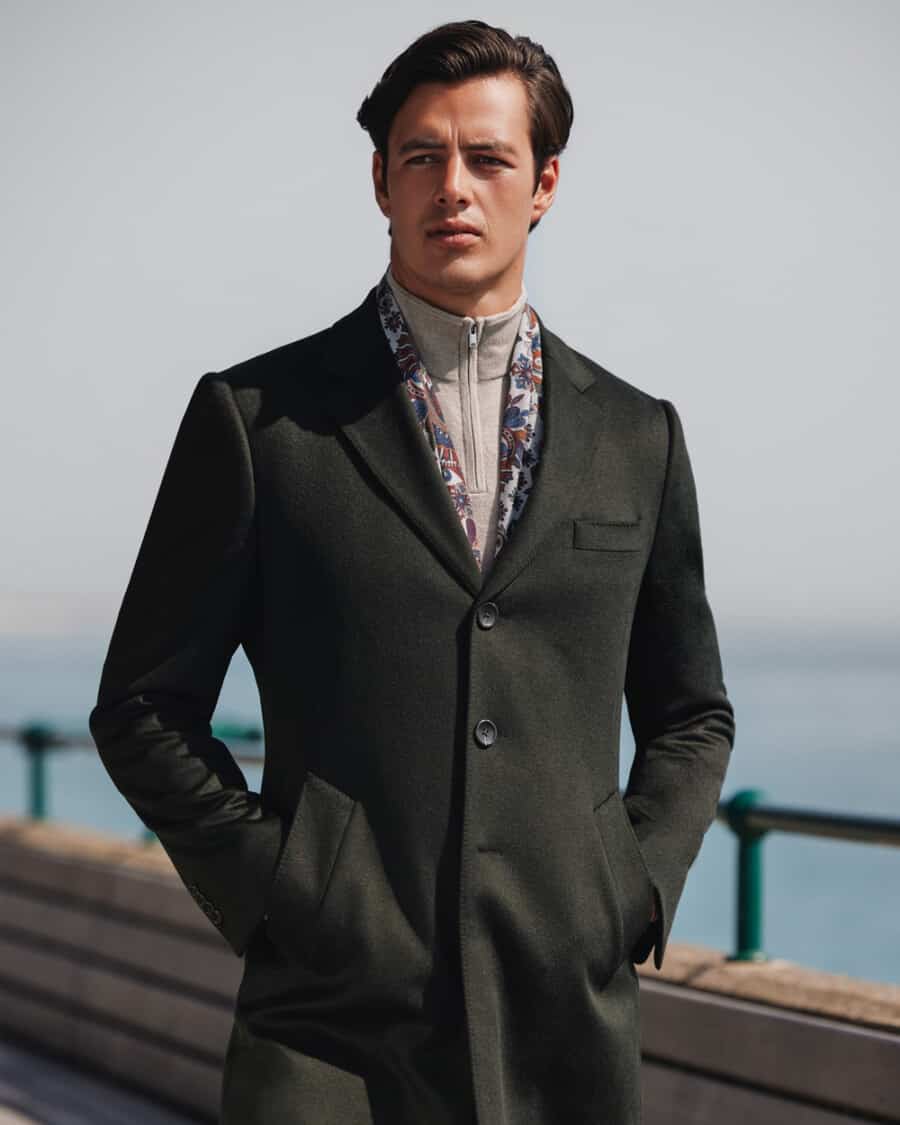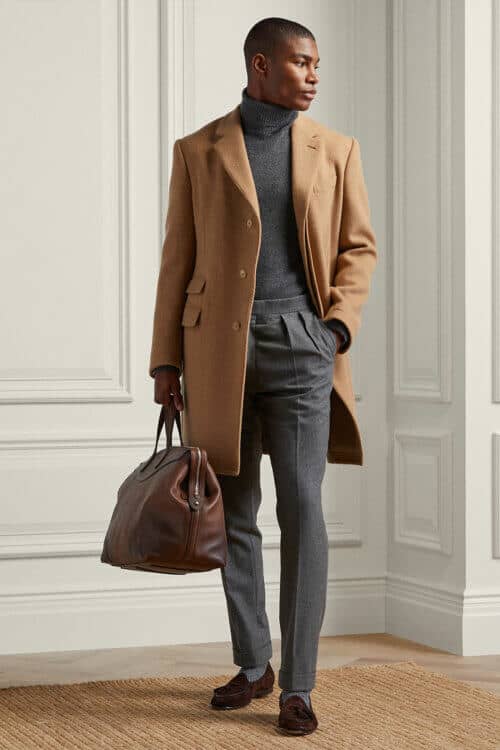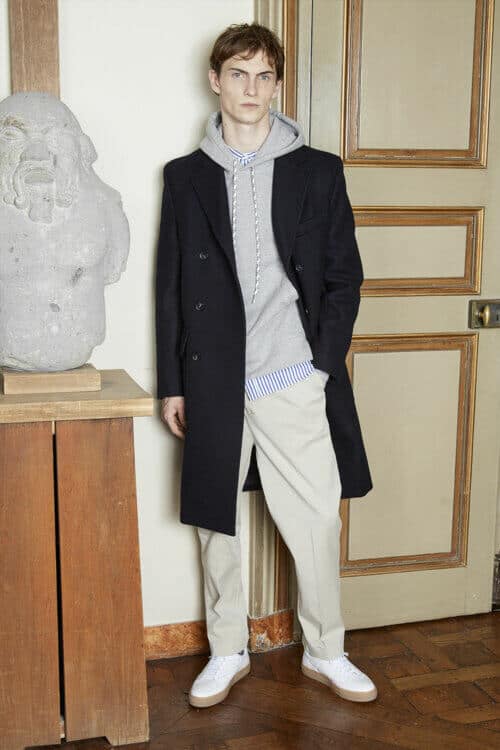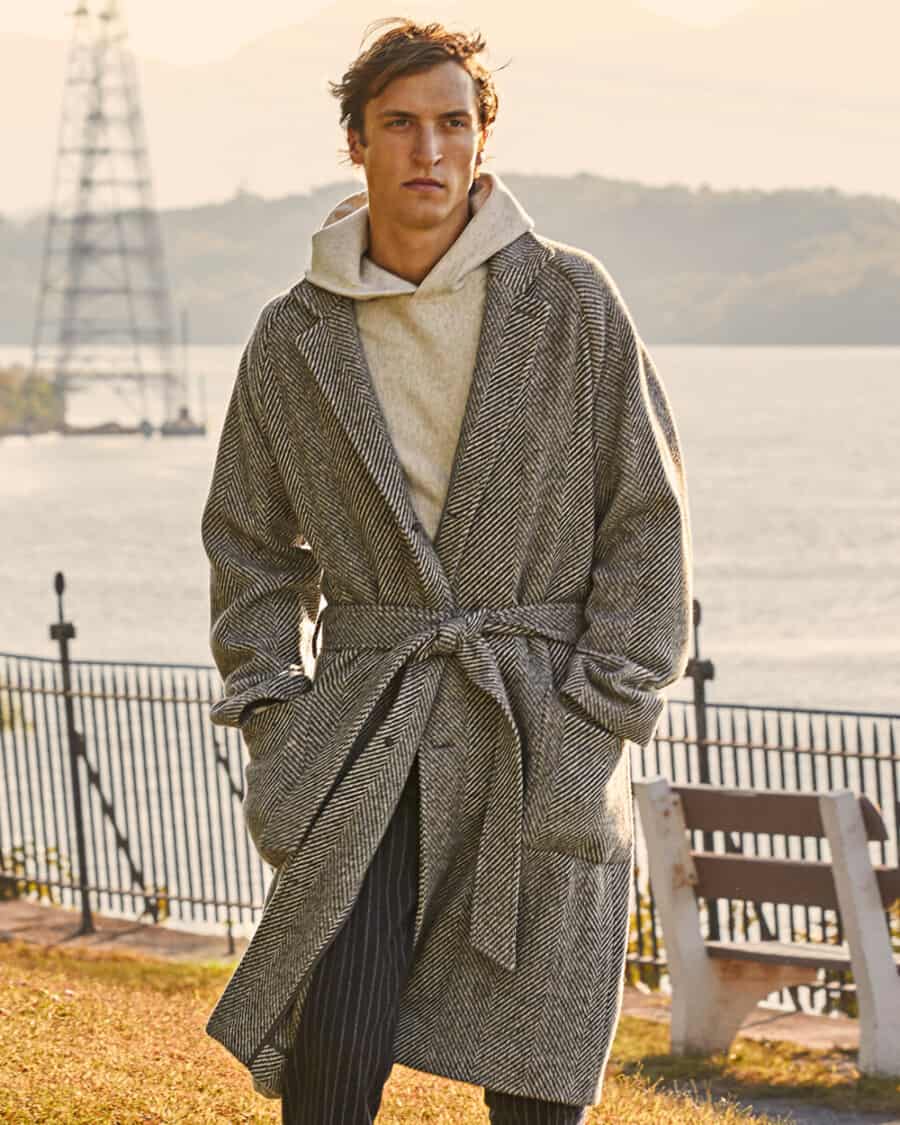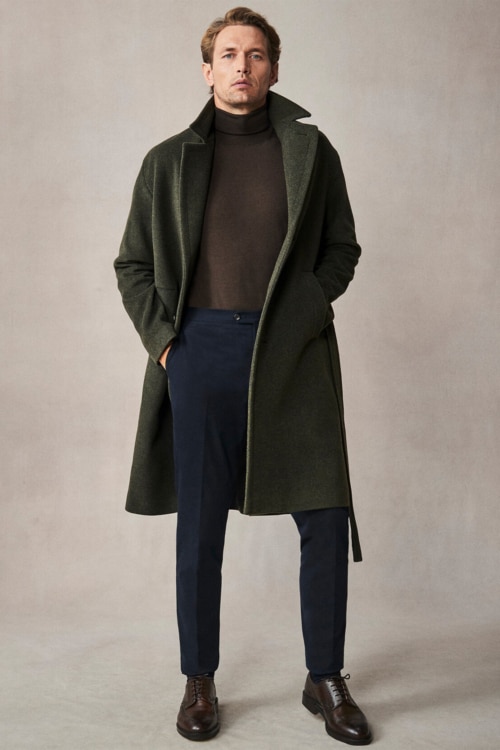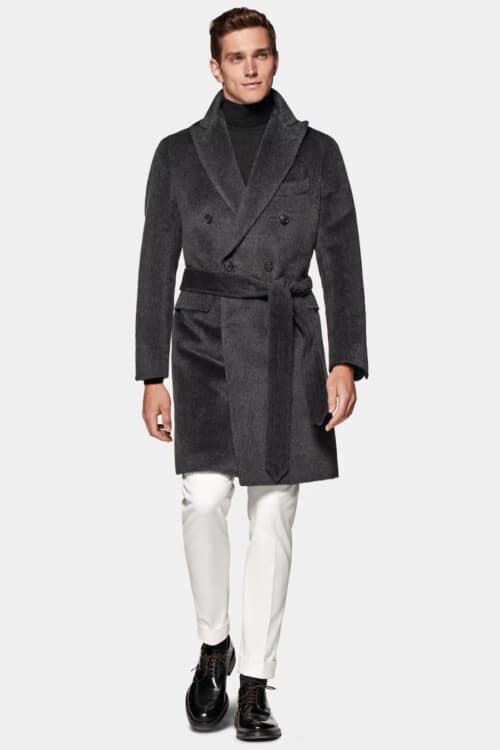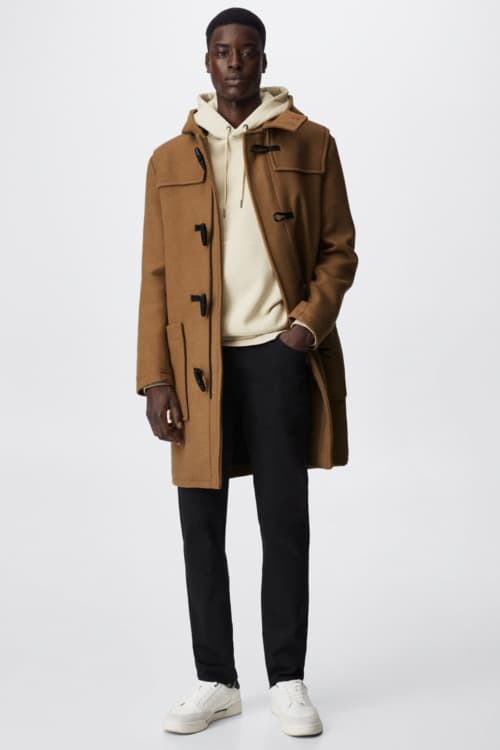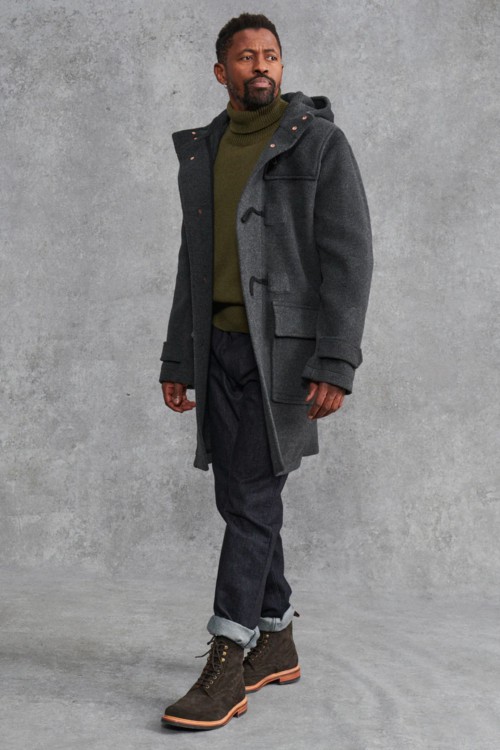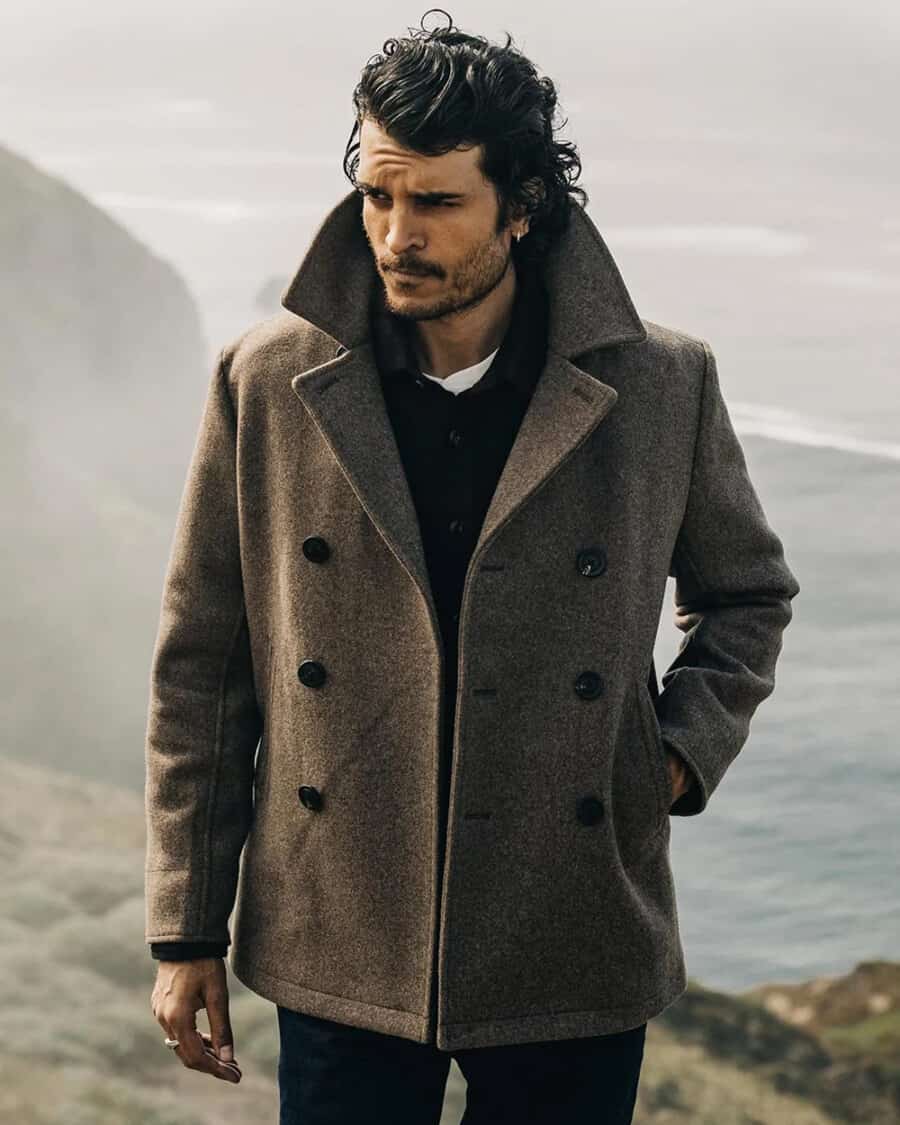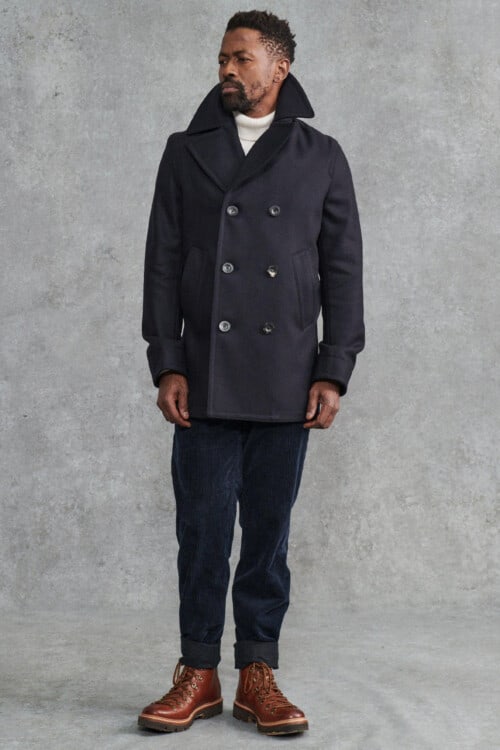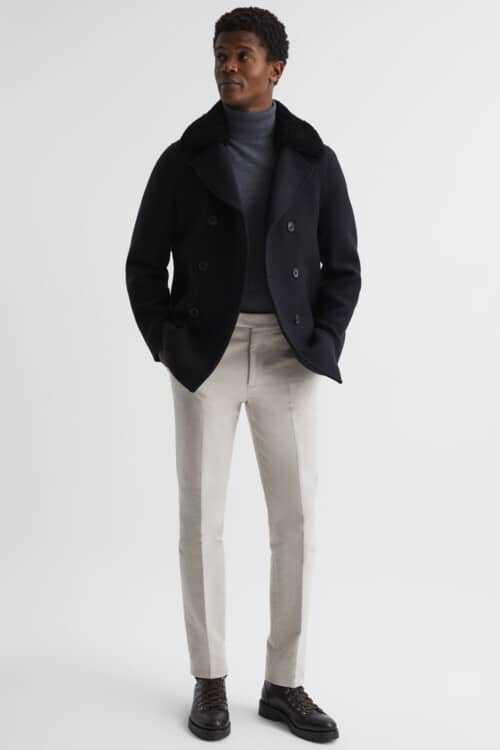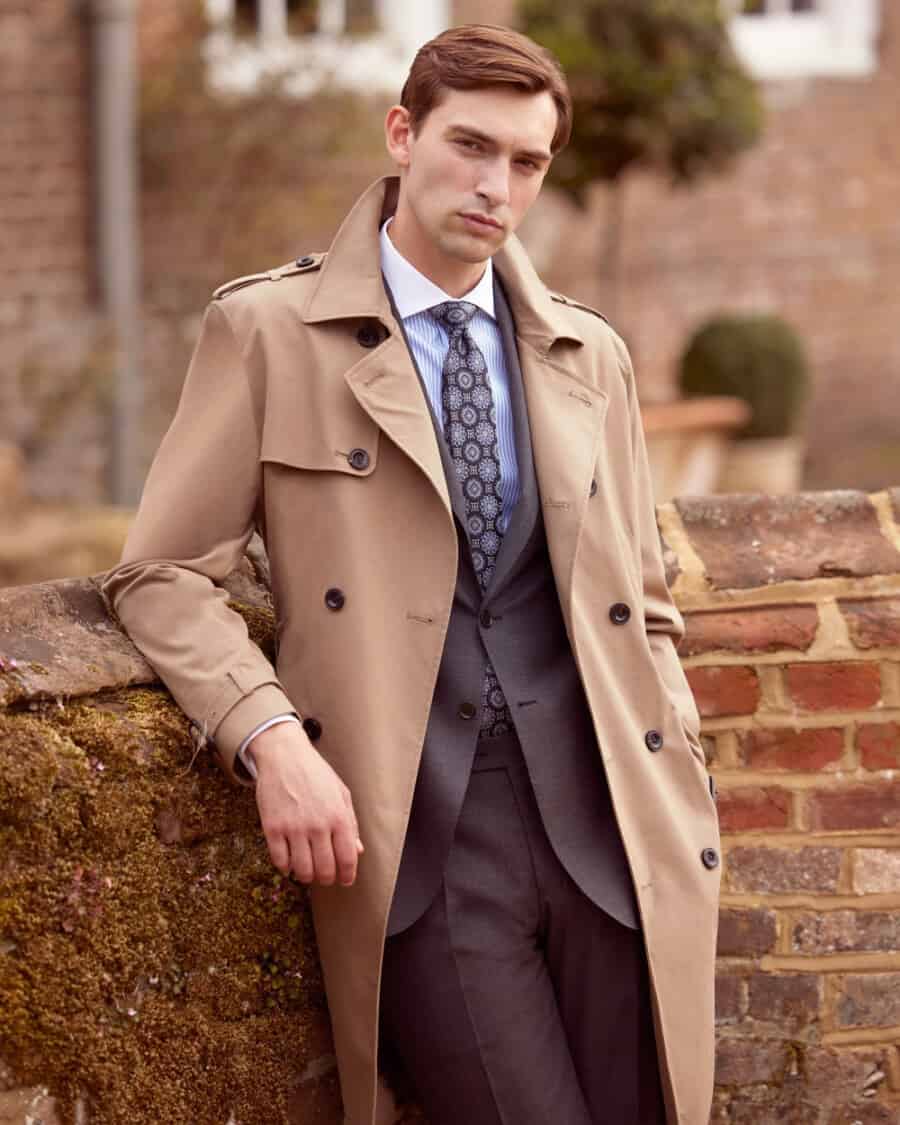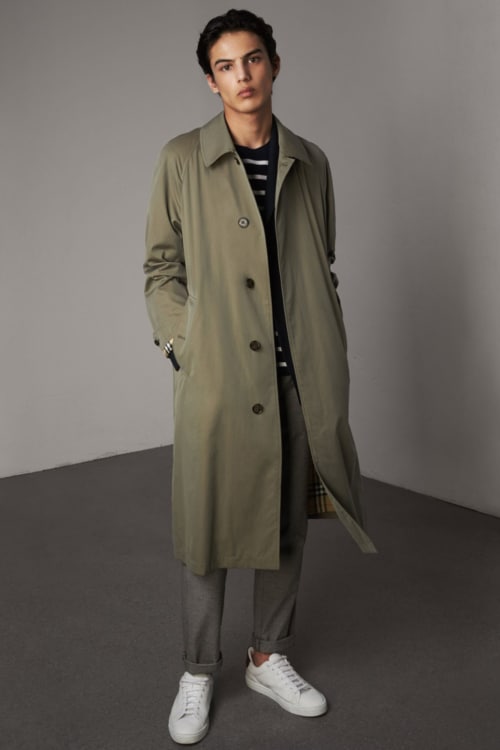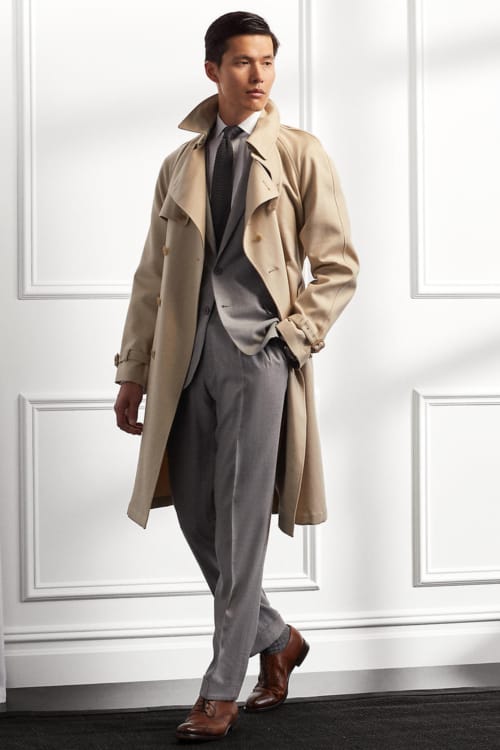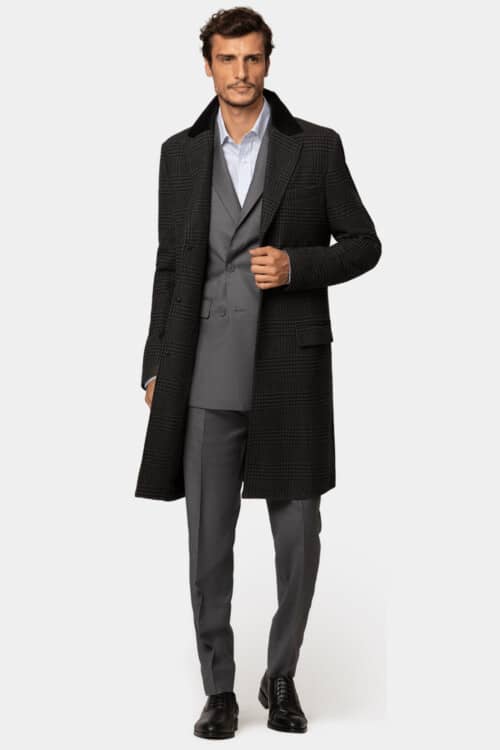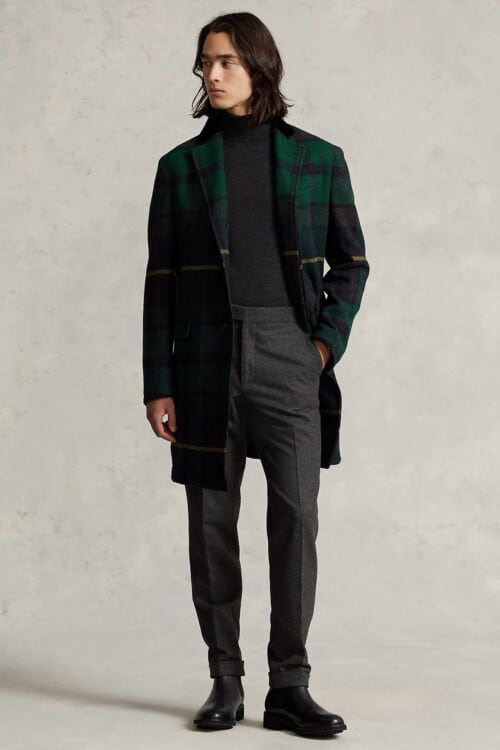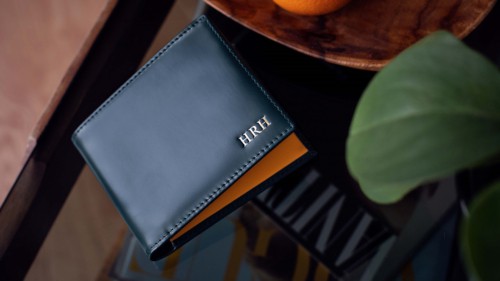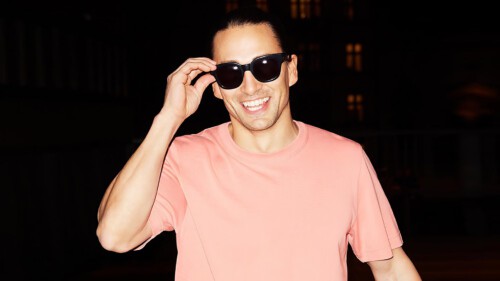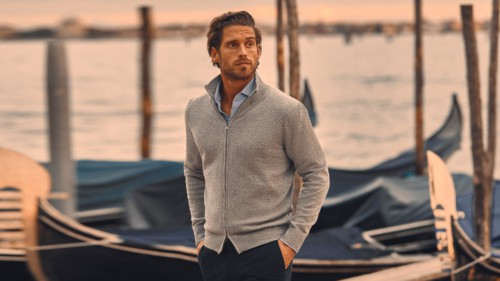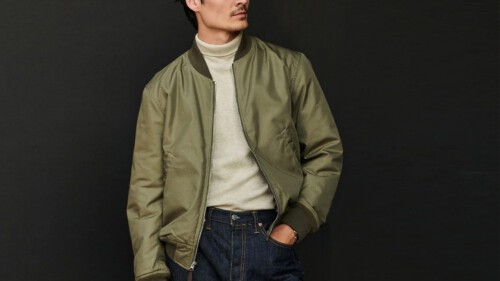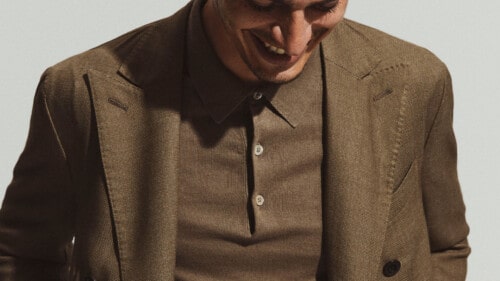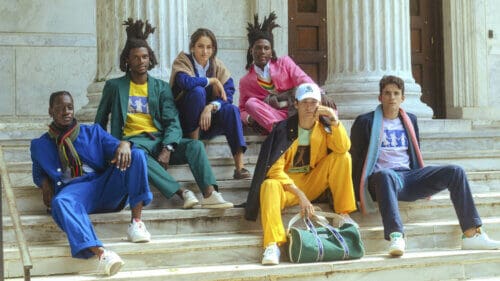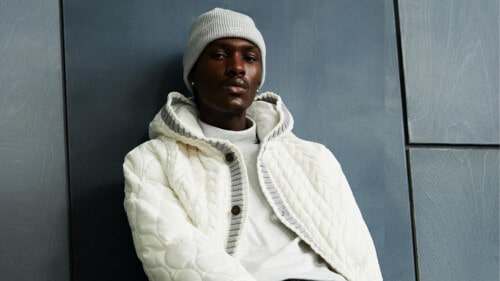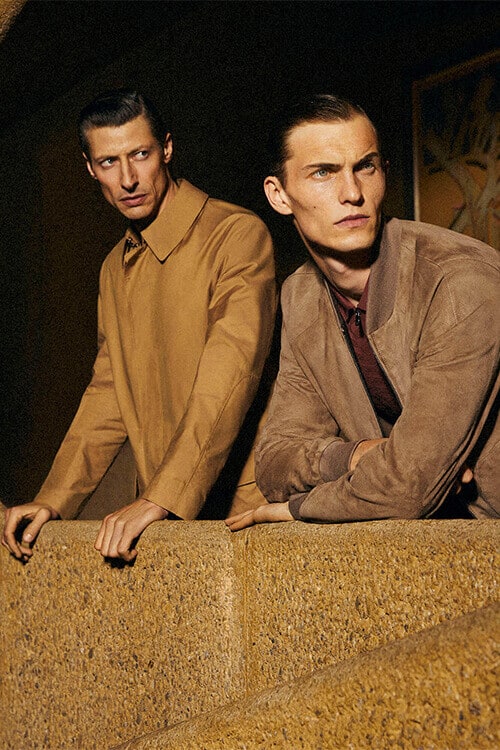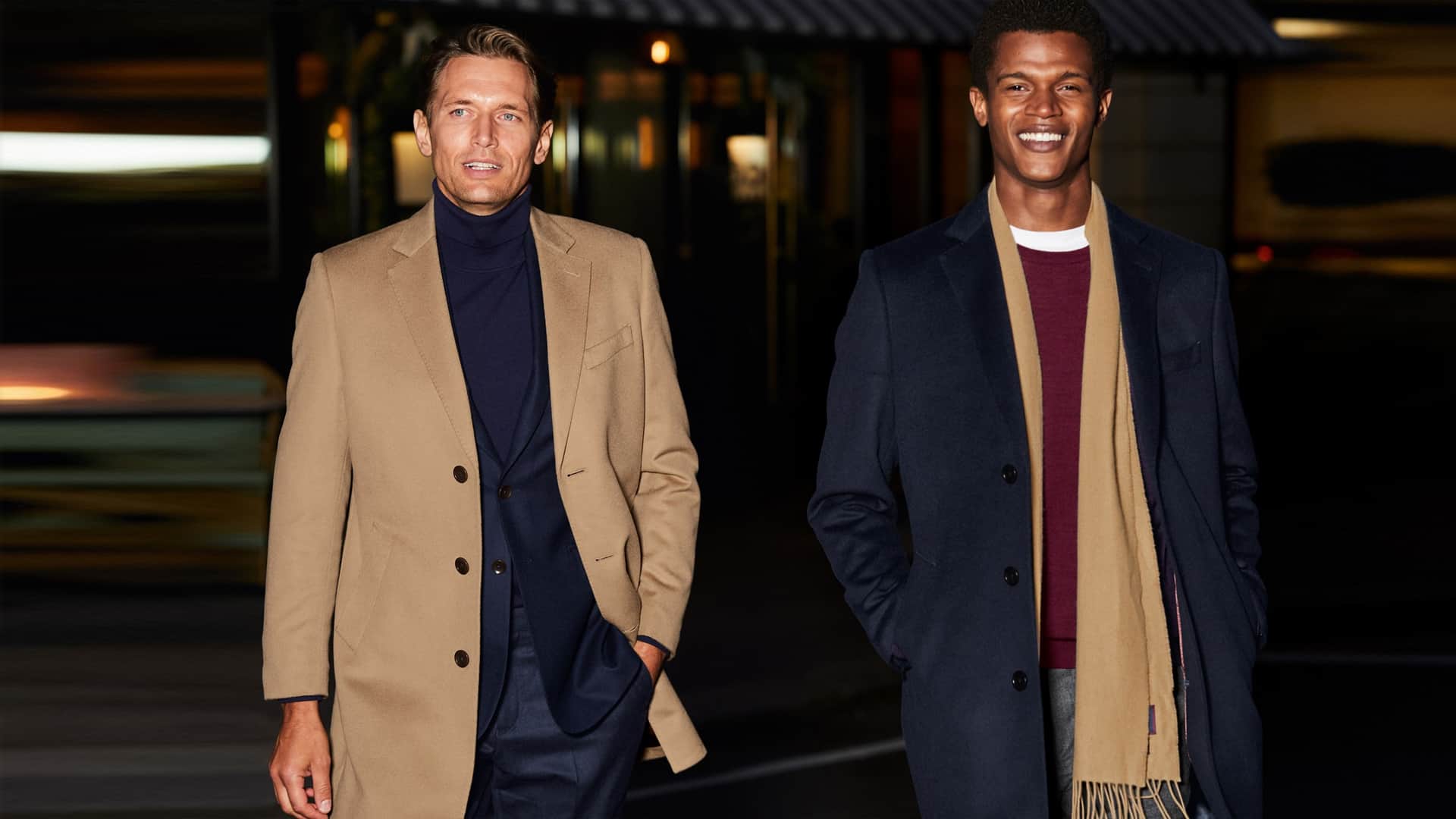
6 Types Of Overcoats All Men Should Consider
A guide to the most important overcoat styles for men, including the differences between them all and the brands making the most stylish versions in 2024.
There’s often some confusion when it comes to men’s overcoats, mainly due to semantics. The term ‘overcoat’ does indeed refer to a coat one wears over a sports coat or a suit, but there are also a number of other terms, such as topcoat, or Great Coat, or Ulster, which appear to describe the exact same garment.
To the discerning eye, there are very subtle differences – which we’ll get into shortly – but generally speaking an overcoat is any coat that one can wear over your clothing to protect from the elements and add a sartorial finish to a look.
Below we take a look at the six key types of men’s overcoat, breaking down what defines each style, what to consider before you buy, and the brands making the best versions in 2024.
Classic overcoat / Top coat / Great coat
The overcoat has existed in its current format from around the late 18th century, first as a symbol of style and wealth, but with the onset of war in Europe, it took on much more functional status.
It was the Regency dandies that got the ball rolling on the style front, and post Second World War, the overcoat found a new lease of life on civvy street thanks to a number of subcultures reinvigorating it.
Defining features
The classic overcoat is typically tailored from a mid-weight wool or cashmere cloth, finished around the knee or lower with a single vent at the back. Whether it comes in a single-breasted or double-breasted cut, it’s actually quite minimalist, with no belt or cuff details, just two front flat pockets.
Today you’ll find a vast array of styles, from fitted sartorial versions to more fashion-forward oversized designs, as well as coming in a variety of textural wool yarns spun with tactile fibres such as mohair.
You’ll often also see the classic overcoat referred to as a ‘top coat’ or a ‘great coat’ – they are really the same thing, only the top coat tends to refer to a lightweight transitional jacket, while a great coat is often made from a substantial heavyweight wool cloth making it a popular winter coat option.
What to consider before you buy
With limited details to consider, the main question when choosing an overcoat is the fabric, and whether to go for a single- or double-breasted style. The single-breasted version is perhaps more modern and versatile, giving you great styling options.
As for fabric, if you want a luxurious tailored aesthetic, then pure cashmere is the way forward, but you can still find stunning examples in virgin wool. If you want more texture, then look for alpaca and mohair blends.
Who they suit
Literally everyone. Whatever your sartorial leaning, a great overcoat is a great overcoat, and the right one can be worn in myriad ways.
Invest in the best you can afford and it’ll live much longer than any trends you lean into.
Recommended brands for classic overcoats
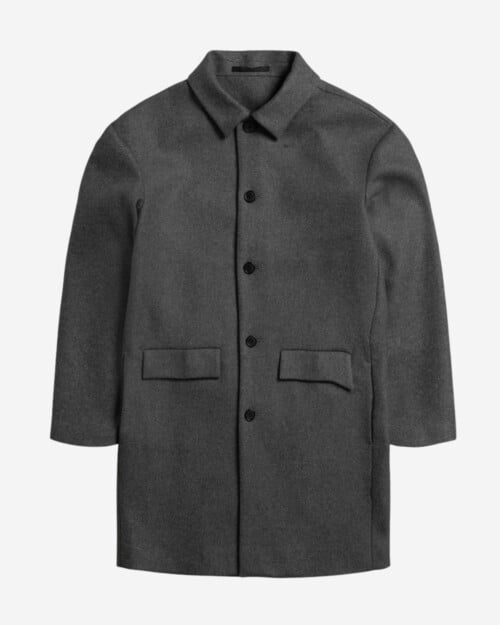
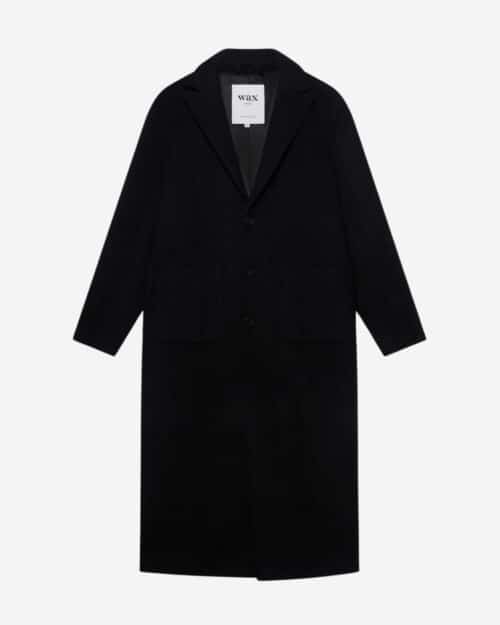
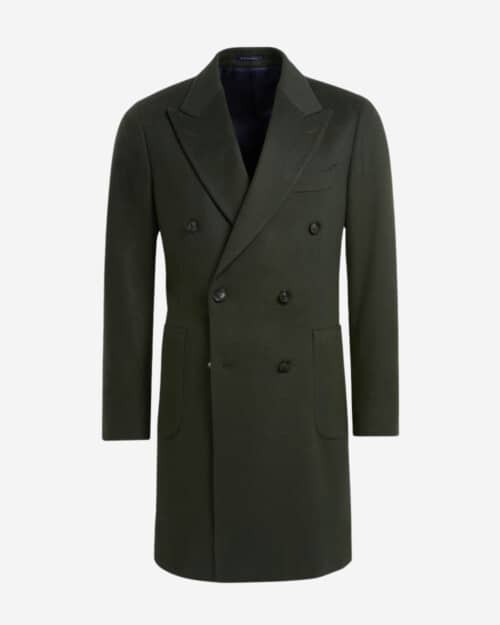
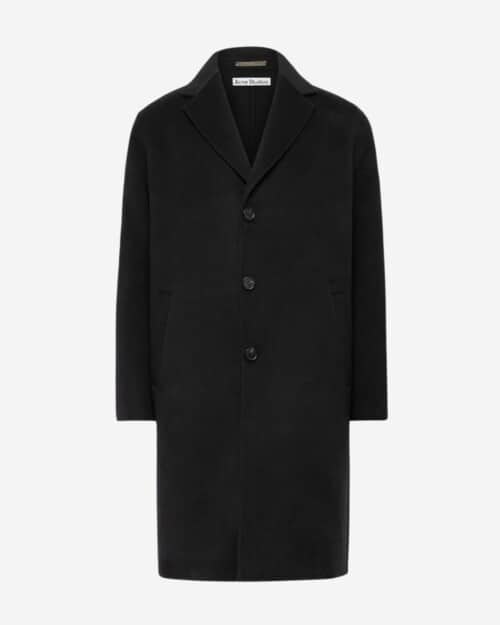
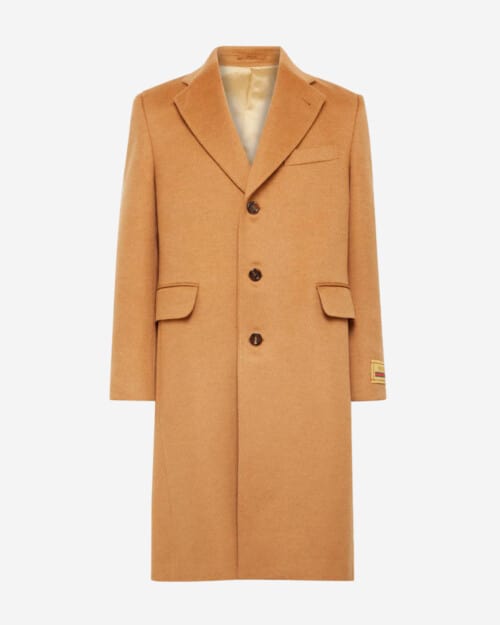
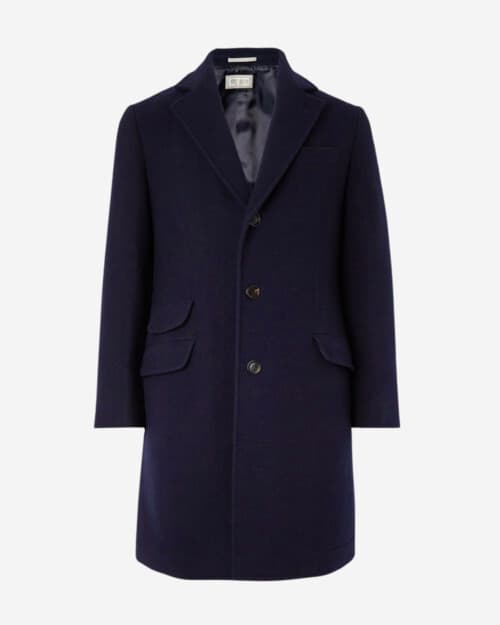
Just about every luxury coat brand and fashion label offers overcoats so the world is your retail oyster. For the best of the best, seek out high-end Italian brands like Brunello Cucinelli, Loro Piana and Zegna, which have integrated supply chains that ensure the highest quality fabrics. Of the fashion houses, Gucci, Acne Studios, The Row and AMI all produce great perennial options.
Brioni, Barena, Boglioli and Piacenza Cashmere are all excellent too, but it’s worth seeking out some of the smaller tailoring houses for the best value – think the likes of Suitsupply, Charles Tyrwhitt, Hawes & Curtis and Hackett.
Polo coat
As the name suggests, the Polo coat’s genesis was on the polo field, or rather just to the side of it, as players used to wear an oversized tailored camel hair coat to keep warm in between chukkas (the first incarnations were actually called ‘waiting coats’).
It made its way across the Atlantic some time around the turn of the 20th century and became an extremely popular style in the 1920s, with preppy icon Brooks Brothers decking out half of the Eastern seaboard’s collegiate community.
Defining features
The original polo coats were designed to be wrapped, hence they had very roomy dimensions, a characteristic which still sets today’s polo coats apart from other overcoats. Most polo coats are now made from virgin wool or cashmere but you can still first camel hair blends if you look hard enough.
The wrap style naturally morphed into a double-breasted cut, usually belted or half-belted with a pleated back to gather up the excess fabric. It tends to have peaked lapels and two front flap pockets.
What to consider before you buy
The polo coat is an extremely versatile overcoat, being both smart in its details, such as sweeping peak lapels and back pleats, but also casual thanks to the voluminous proportions. In both cashmere or wool, it makes for a bold silhouette, given it usually finishes below the knee.
If you’re on the short side, you’ll want to find a polo coat that finishes around mid-thigh to make your legs appear longer, or seek out a tailor to make some alterations.
Who they suit
Like the classic overcoat, the polo coat is one of those statement layers that will literally go with anything. If a hoodie, chinos and chunky sneakers is your vibe, you’ll instantly elevate the look with a camel polo coat.
Equally, it can be used to add a relaxed element to a suit.
Recommended brands for polo coats
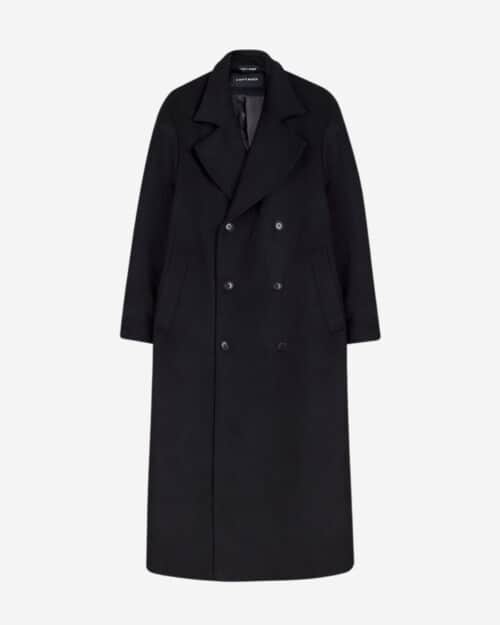

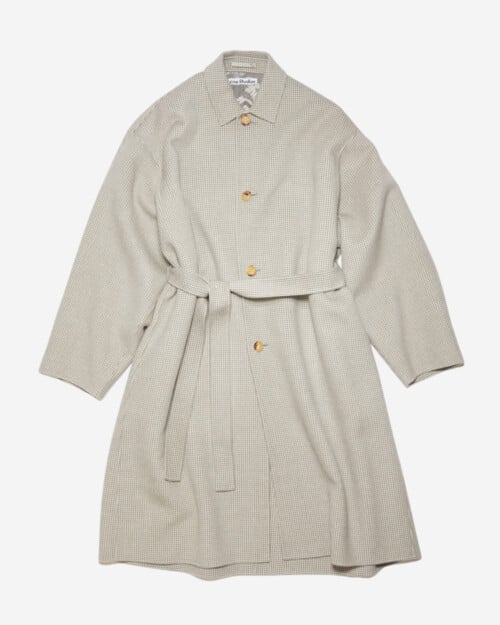
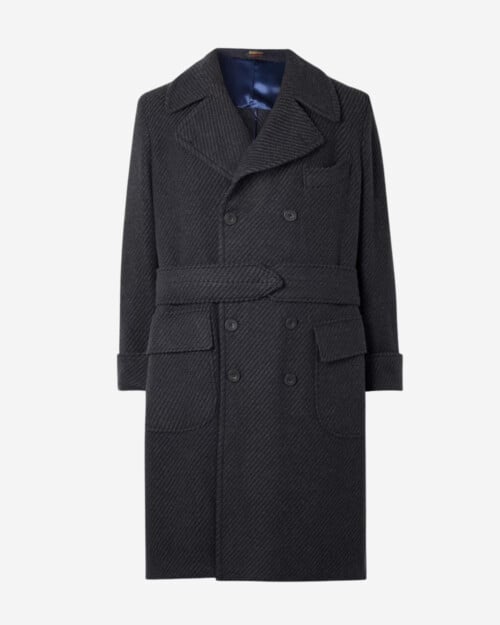
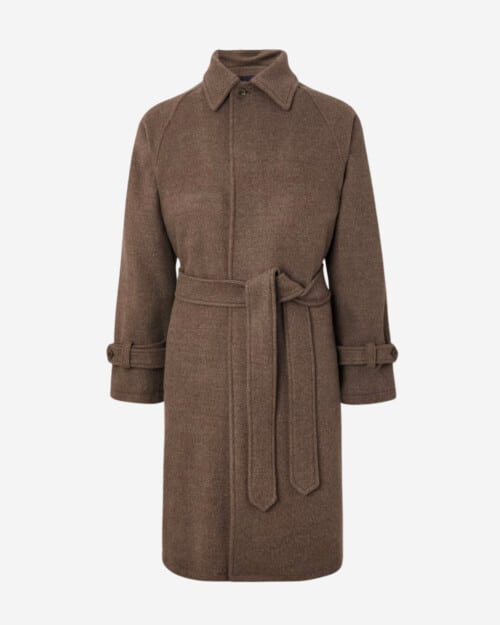
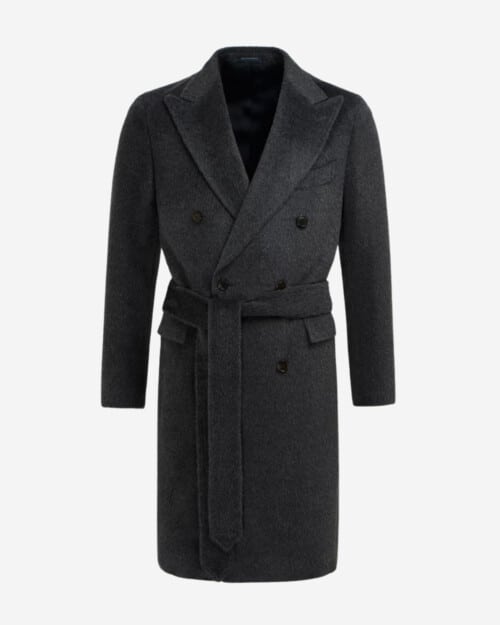
Despite being such a statement silhouette, it’s actually not all that easy to find a high quality polo coat these days, although with fashion houses seemingly hell-bent on an oversized look, it might not be long before the polo coat once again gains prominence.
One of the best styles we’ve seen is by Husbands Paris, which makes a stunning fully canvassed, double-breasted, belted style in baby camel hair. Otherwise, you’ll need to seek out niche tailors with a love of the classics, or fork out for a bespoke number.
As for the fashion brands, minimalist labels such as The Row, Jil Sander and Joseph will often create coats that come pretty close to the polo coat definition.
Duffle coat
One of the more casual styles on this list, the inimitable duffle (or duffel) coat gets its name front the original fabric it was crafted from: a thick, heavy and coarse wool from the town of Duffel, just outside Antwerp in Belgium.
The iconic styling, however, was very much a result of the British Navy, who it’s thought had been inspired by the Polish frock coat of the mid 1800s. Constructed from tough water-resistant Melton wool, the Duffle coat became standard issue for British troops in the Second World War until it was phased out for lighter, more technical fabrics.
Hence thousands of them found their way to army surplus stores in the 50s and 60s, when they became popular with students.
Defining features
Typically constructed from tough Melton wool, the duffle is perhaps best known for its horn toggle closure with leather fastenings, and an integrated hood.
It’s a roomy silhouette that finishes knee-length and usually has a double-faced check lining, making it one of the best winter coats for braving the elements in. The fuzzy nap of the wool and the overall shape of the duffle mean it’s a more casual style compared to the others on this list.
What to consider before you buy
Weight, shape and fabric are the three things you should give most consideration to when choosing a duffle coat. Some higher end duffles will swap out the Melton for a softer, lighter virgin wool, which is perfectly fine, giving the coat a slightly more polished finish.
The silhouette can vary, with some more fitted and straight than others, so think about how and what you’ll wear it with.
Then there’s the fine details: leather fastenings or jute rope? Horn toggles or wooden ones? Classic check lining or something more contemporary?
Who they suit
The duffle coat is best worn with casual off-duty workwear looks, so think selvedge denim jeans, relaxed chinos and rugged work boots. Navy styles with tonal toggles are smarter but you can find plenty of excellent duffle coats in black, camel, brown, grey and rust.
Contrast toggles brighten up the look and can make for an interesting styling detail.
Recommended brands for duffle coats
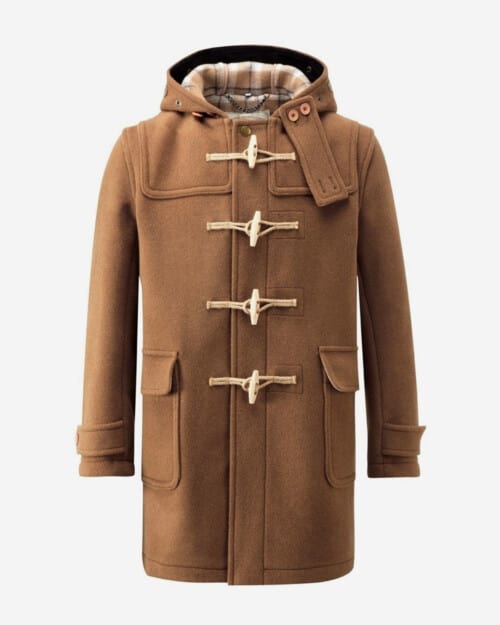
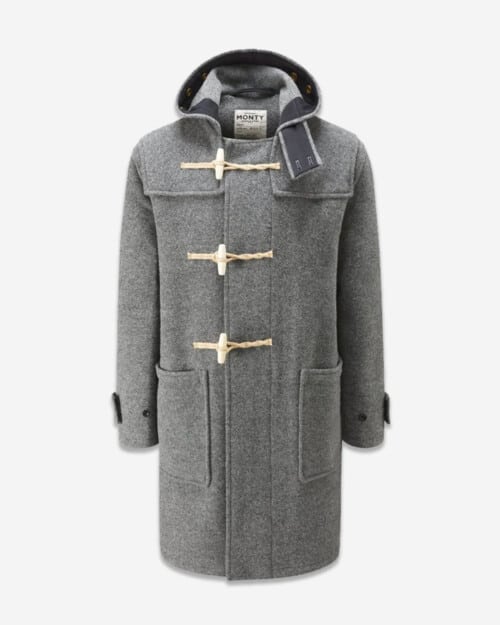
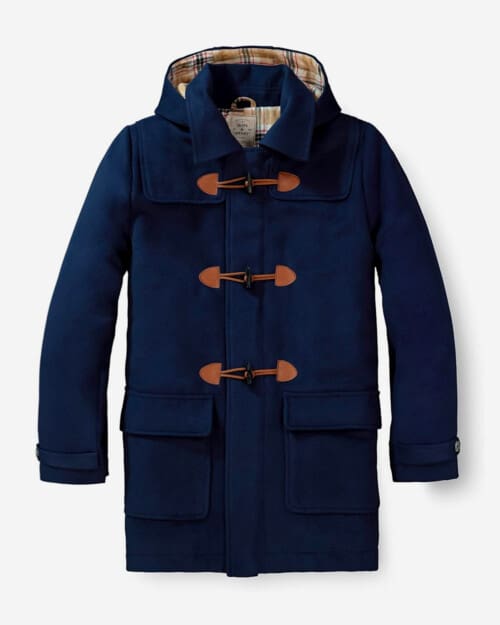

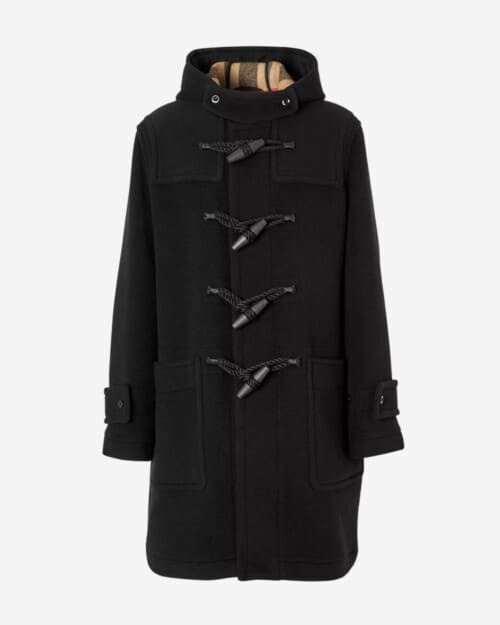
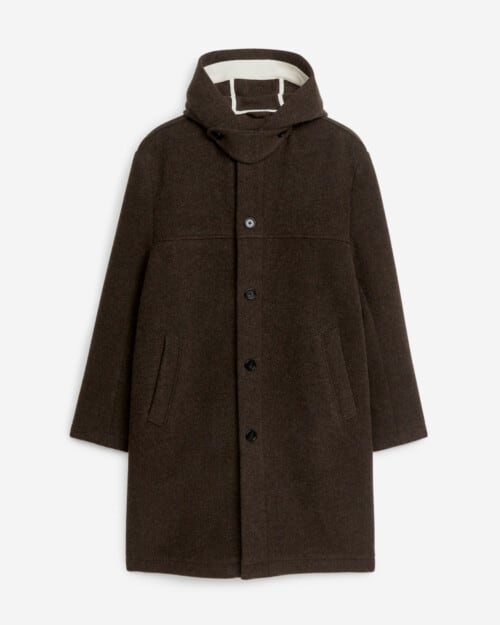
The one and only Gloverall. The heritage British brand is the original maker of the duffle coat, and have been crafting them since 1954. They have an amazing array of styles in all manner of colours and cool configurations. No one else really comes close.
However, if you are shopping around there are a few other UK names that are worth considering, such as Paul Smith, Private White V.C. and Original Montgomery.
Peacoat
Another jacket with origins firmly rooted in the British Navy, this mid-length double-breasted style was originally designed to protect mariners from the tumultuous conditions at sea.
Earlier versions date back to the 18th century, where it’s thought to have been designed by Dutch tailors, since the word ‘peacoat’ is believed to be a derivative of the Dutch word ‘pijjekker’, in which pij refers to the coarse twilled navy blue cloth which was used.
In 2024, it’s a great timeless coat providing a sartorial touch to smart casual attire.
Defining features
The peacoat is instantly recognisable thanks to its comparatively short length, broad lapels, double-breasted front, three or four large buttons in two rows and vertical or slash pockets.
The original styles were made from navy blue Kersey wool that was only lightly treated so as to keep so much of the naturally waterproof lanolin oil in the fibres. It wasn’t until the 1940s that American coat maker Schott began to incorporate lighter Melton wool in its peacoats, and although you can still find plenty of such styles, most luxury peacoats will be constructed from merino, lambswool or cashmere.
What to consider before you buy
Thankfully, the peacoat doesn’t really come in a wild array of variations, so your considerations when purchasing one are kept to a minimum. Navy is the typical colour but black styles are also very common.
The fabric choice depends on how you are going to wear it – classic Melton wool is more rugged and will better suit casual looks, whereas a cashmere blend is softer and thus more elevated.
Some versions will often come with epaulets as a nod to the military heritage, and while we’re not totally against them, they can be an old-fashioned affectation that limits your styling options.
Who they suit
The double-breasted cut of the peacoat and the shorter length means it lends itself well to casualwear. Despite this being an article on overcoats, the peacoat of today is not really a true overcoat in the sense that you wouldn’t wear it over a sports coat or a blazer.
Instead, it’s much better suited to layering over a turtleneck, mock neck or crew neck sweater, with some tapered selvedge jeans, Belgian loafers or Chelsea boots.
Recommended brands for peacoats
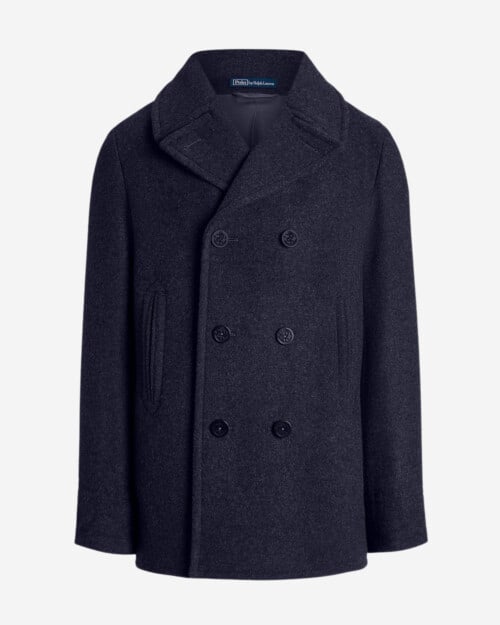
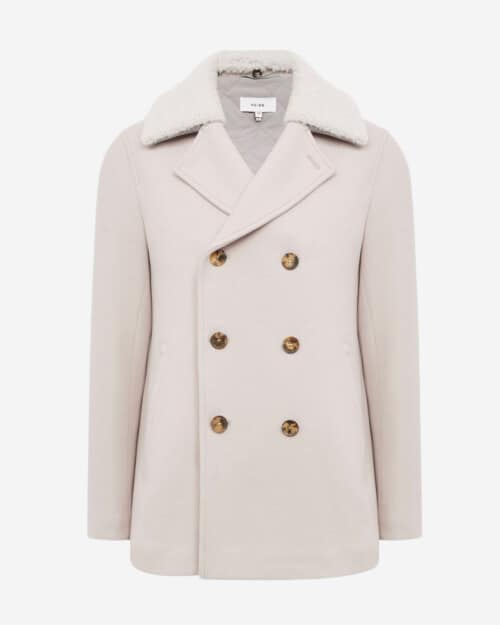

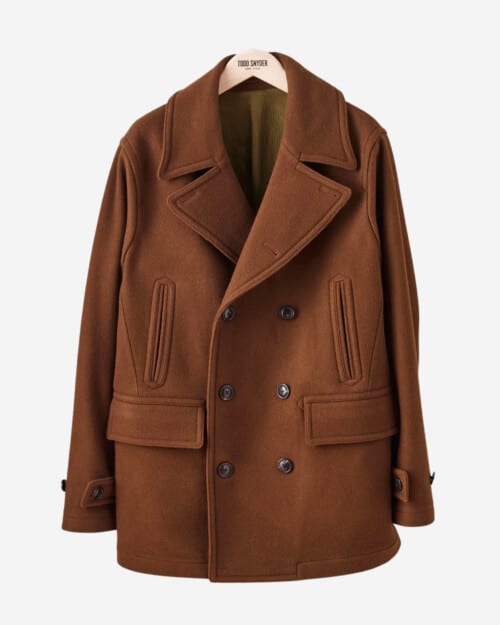
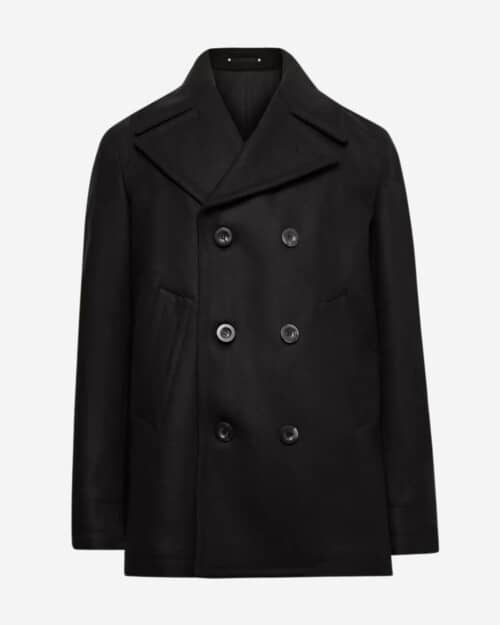
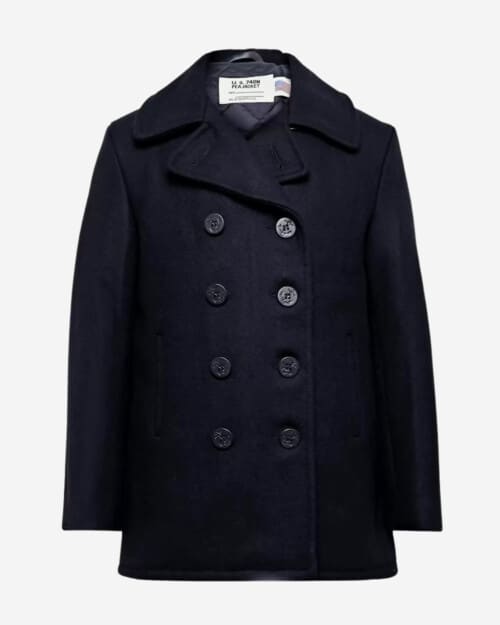
There are a plethora of tailoring houses and traditional outerwear brands that make excellent peacoats, from Schott and Gloverall, to preppy stalwarts like Ralph Lauren, Todd Snyder and GANT, all the way up to luxury labels such as Saint Laurent, Burberry and Balmain.
Naturally, fabric and fashion clout will largely dictate price, so if you want value for money, gravitate towards the specialist outerwear makers.
Trench coat
Yet another piece of men’s outerwear with its origins in military clothing, the trench coat is so-called because it was the style worn in the trenches of the First World War.
Charles Mackintosh is credited with first waterproofing cotton in 1823 but who first commercialised the invention is more contentious. One version of history has John Emary first patenting a water-repellent cotton fabric – he went on to found his company, Aquascutum, around the cloth (‘aqua‘ meaning ‘water’ and ‘scutum‘ meaning ‘shield’ in Latin). Another version has one Thomas Burberry inventing a waterproof gabardine around the same time.
Either way, both men accelerated the popularity of waterproof cotton, and thus the trench coat was born.
Defining features
The trench is a belted double-breasted three-quarter length coat with wide lapels and a 6-10 button fastening. Traditional styles typically featured a pleated storm flap across the shoulders to repel the rain, but it’s not all that common on contemporary styles.
More often than not, the modern trench coat is still made from treated cotton gabardine, as it needs to be functional as well as fashionable, but there are plenty of styles constructed from lightweight technical and performance fabrics, too.
What to consider before you buy
Colour and details such as buttons and belt hardware are generally the only considerations you need to make, besides the length.
While traditional styles were long for obvious protective value, the modern trench coat is typically mid-length.
The most common colour is the light beige tone but you can now find an array of colourways such as black, navy, forest green and even brighter hues.
Who they suit
The trench coat is a really versatile overcoat, and while it is perhaps best worn with smart tailored looks such as a high-end suit or separates, it can be equally dressed down with a more contemporary streetwear look.
The classic beige version makes for a nice contrast with a charcoal or navy suit, but if you want to wear it in a sophisticated off-duty way, think about sticking to tonal creams and tans.
Recommended brands for trench coats
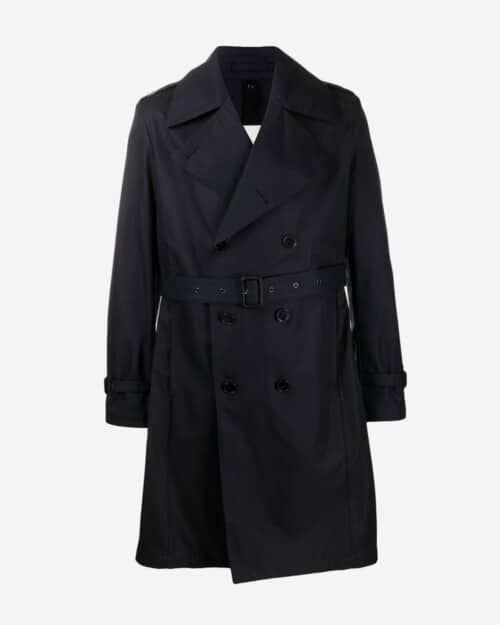
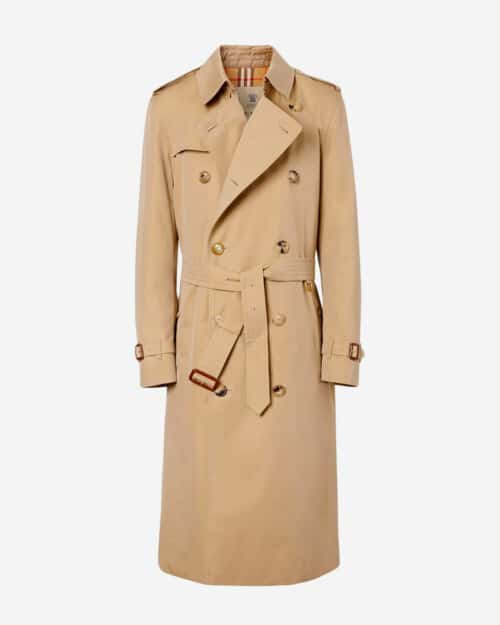
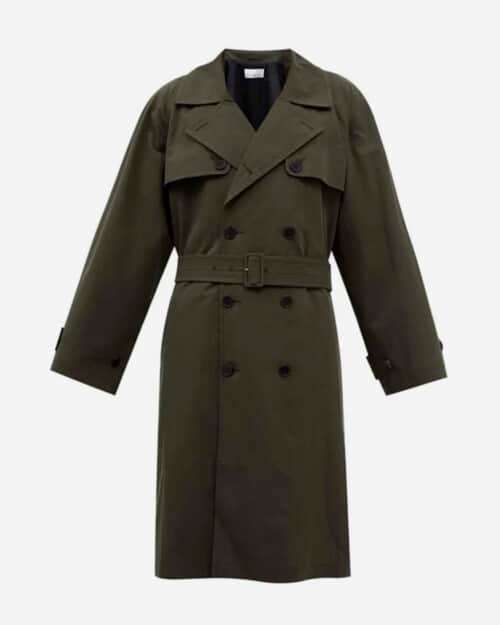
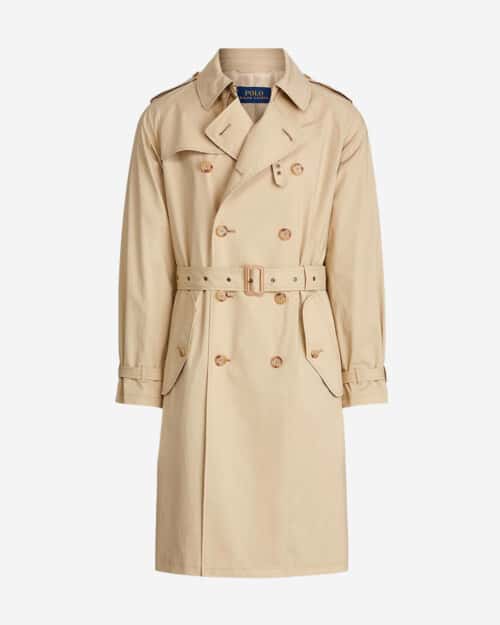
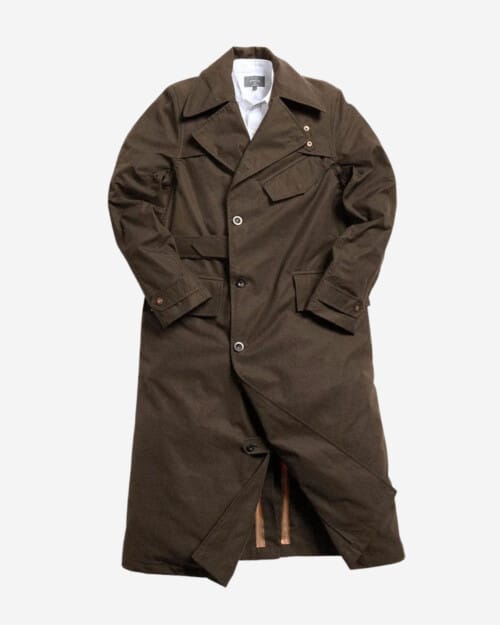
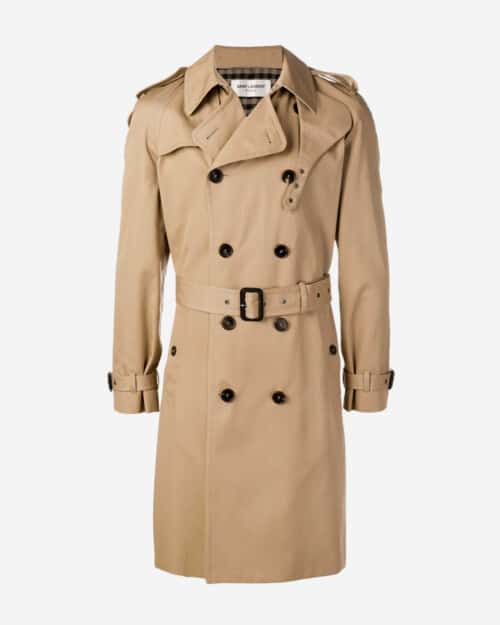
Burberry’s Kensington trench coat is the cream of the crop, and is available in a variety of colours, as well as three different lengths. Likewise, Mackintosh continue to produce some excellent traditional versions that stay true to the original template.
Otherwise, check out brands such as Husbands Paris, Saint Laurent and Officine Générale for slick modern iterations.
Chesterfield coat/Covert coat
Bald, bearded and rotund is not how you would describe a modern-day influencer, but it’s how you would describe the 7th Earl of Chesterfield, George Stanhope, who despite outward appearances, was a style trendsetter of the mid-1860s.
Stanhope was best known for popularising a knee-length formal overcoat with a velvet collar detail, which later became known as a Chesterfield coat. It’s also sometimes called a ‘covert coat’.
Defining features
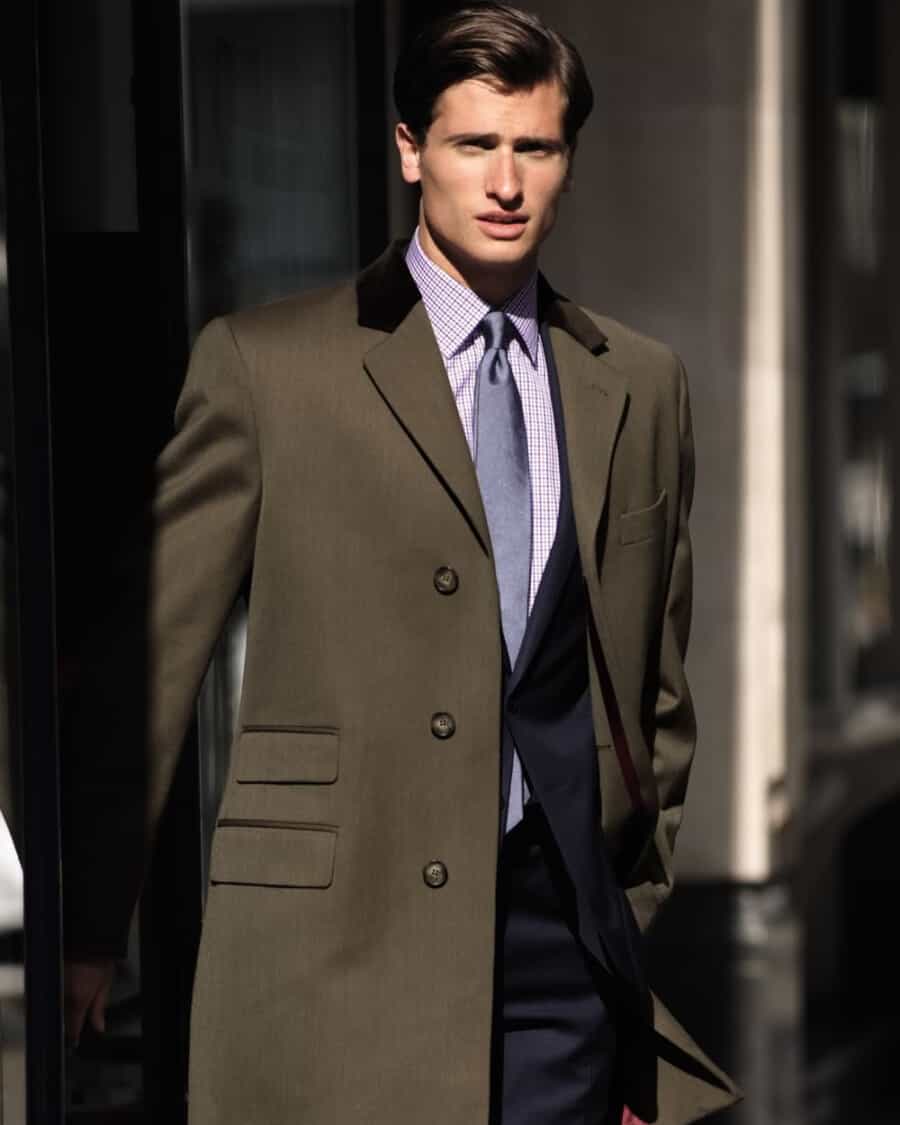
The Chesterfield can come in a variety of fabrics, from smooth camel hair blends to much more rugged tweeds, and is more commonly crafted in darker wool tones so that the velvet collar is less of a jarring contrast.
Of all the coats here, it is probably the most shaped through the waist, thanks to side seams and darts, while flat pockets and a plain back with a single vent give it a svelte silhouette perfect for more formal suit looks.
Single- and double-breasted varieties are equally as common.
What to consider before you buy
Choosing a fabric for your Chesterfield will depend on how you intend to wear it, but most styles will be constructed from a high quality virgin wool, as well as some cashmere blends. It tends to have a smooth finish, so avoid anything with mohair.
Herringbone weaves are also very common for the Chesterfield, adding a nice chevron pattern to the silhouette.
Ensure the collar is made from plush cotton velvet in a dark tone such as navy, black or burgundy, making it a subtle and sophisticated detail rather than something that looks out of place.
Who they suit
The Chesterfield is the most formal coat in this list, and has evolved to become something of a ‘night coat’. The dressy velvet collar is an affectation that is best seen in the evening, worn with smart tailoring or over formalwear such as black tie.
It would be somewhat out of sync with your typical suit during the day so reserve it for nighttime excursions to swanky events.
Recommended brands for Chesterfield coats
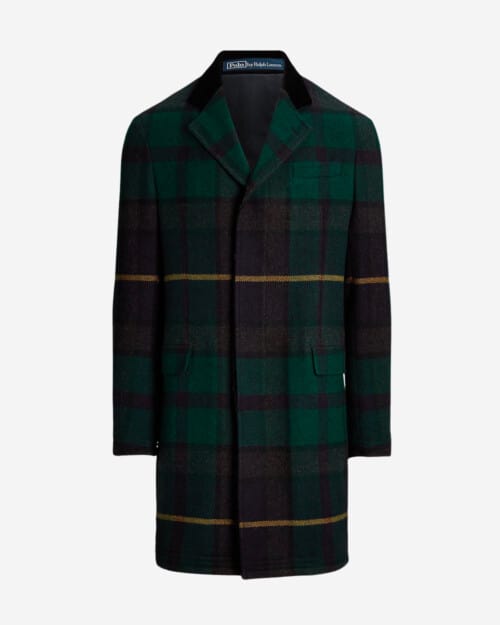
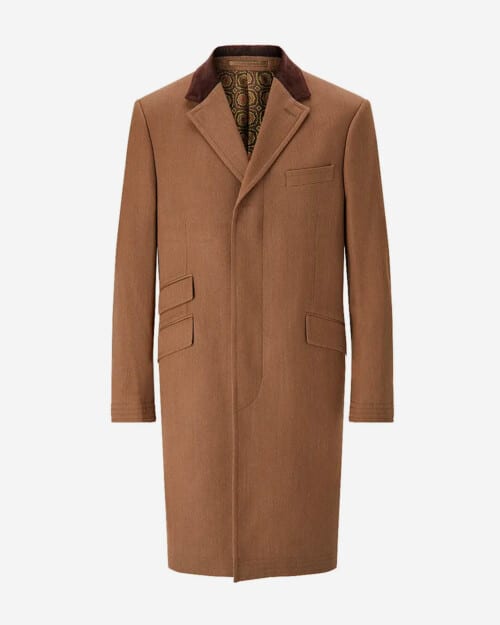
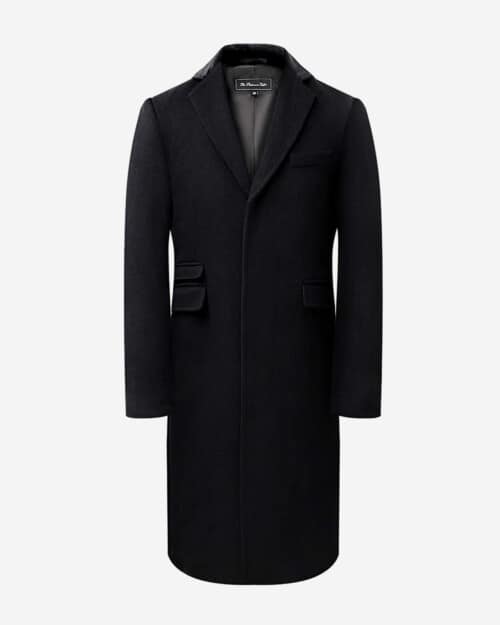
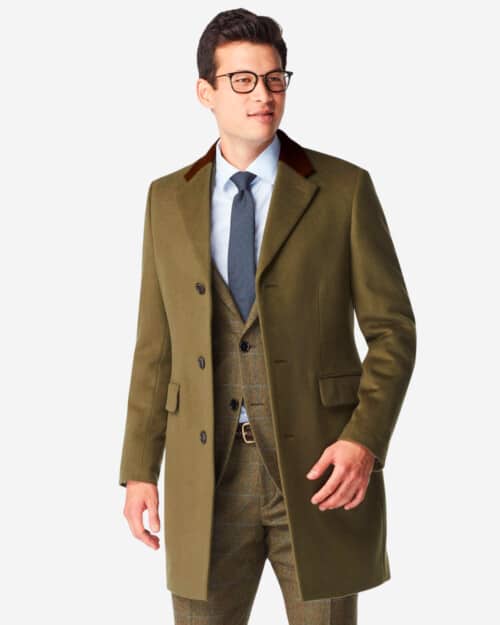
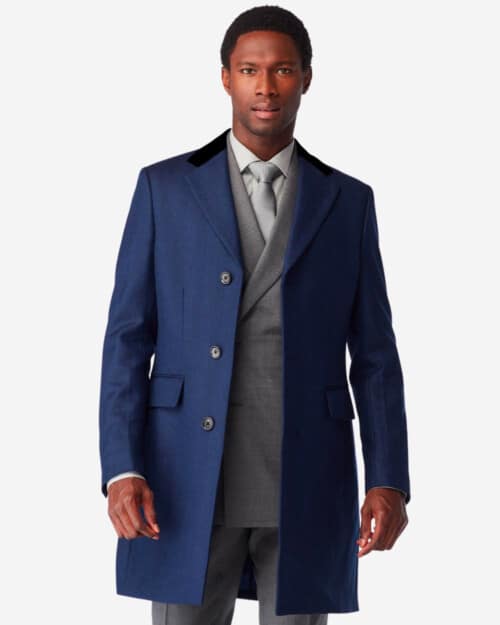
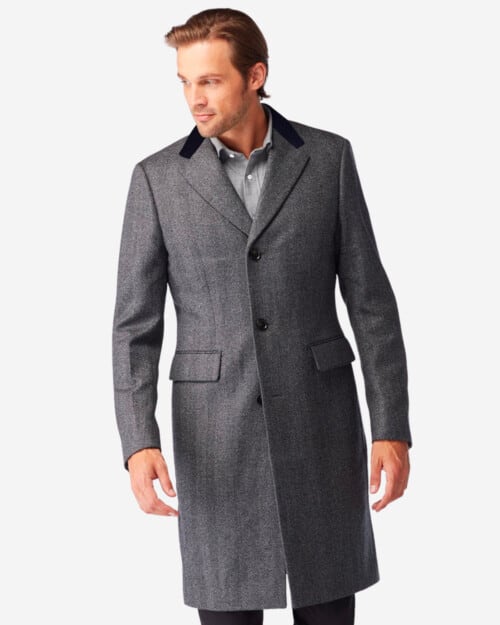
Given that it’s quite an antiquated style, you’ll need to seek out the heritage brands for the best examples of Chesterfield coats.
Savile Row is an excellent place to start, provided you’re willing to shell out the necessary funds. Otherwise, tailoring brands such as New & Lingwood and Indochino almost always create perennial Chesterfields in fawn and navy styles.
